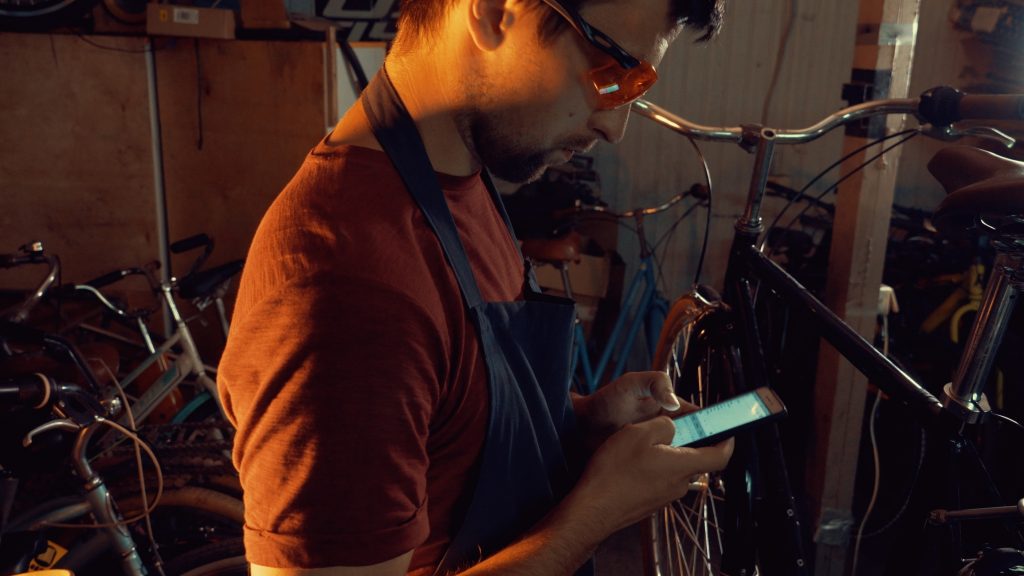
You probably spend a lot more time doing business and living your life through your mobile device than you realize. Think about your day, and how often you interact with online resources through your phone or tablet. Well, you’re not alone: people are spending more and more time in mobile apps each day, with time spent having increased a full 50 percent between 2016 and 2018.
So what does this mean for your business? It means you need a mobile presence. A mobile application is no longer a luxury. It is another door into your business that the modern user demands. But the mobile app development process can be tricky to navigate. Creating a successful mobile application is not always as easy as it sounds—or as some people will try to make it sound.
A successful mobile application:
- Meets its intended purpose
- Brings value to end users
- Works
Whether the app is for enterprise use or for commercial download or sale, if you meet the above criteria, your mobile app will be well-received, valued, and used. In other words, it will be a success.
The path to successful mobile application development is not an easy one, but it can be broken down into clear steps. To help you in this endeavor, we have created a handy checklist of 8 steps to follow for successful mobile app development based on our years of experience as a mobile application development company.
Step 1: Define the goal of the mobile application
Before you start any kind of design or development work, identify your user base. What do they need from your app? What value will it bring to them? What devices do they use? Talk to potential users to uncover this information (even if they work for you, you need to talk to them). Use this information to define the goal and purpose of your mobile app. Don’t guess; it’s a sure path to failure.
Step 2: Understand and design for your user’s journey
A truly successful mobile app has to be built with the end user in mind: the job of the app is to help them achieve a goal. To understand them, we follow what we call their user journey: the process they expect to follow in getting something done. Sometimes that can even involve steps outside the app, in the physical world (simple example: “the user walks into the store looking for a specific product, takes out her phone in search of help” could lead to a feature where your app tells her what aisle and shelf the product is on . . . her journey started when she entered the store, and looking at it that way can unlock new ideas for how to make her experience better).
The process of understanding these journeys is called journey mapping, and it starts with categorizing the different types of users we may encounter, using a technique called user personas where we identify user characteristics, behaviors, and goals—as well as potential obstacles, such as “this user is not comfortable with technology.”
Design includes both User Experience (UX) design and User Interface (UI) design. UX design makes sure your app meets users’ expectations. UI design focuses on creating an attractive product that is also appropriate for your business and the app’s purpose.
Step 3: Create prototypes
You won’t really know if you’re on the right track until you put something in your user’s hands. At this stage, you want to achieve this at the lowest possible cost, so use interactive mock-ups of the application rather than working prototypes. There are many tools to achieve this—Adobe XD and Invision are the most popular. Keep the mock-ups simple, while still demonstrating the intended functionality and purpose of the app.
Step 4: Test with users and refine. Rinse and repeat.
Let real end-users interact with the prototypes. Gather feedback regarding functionality, design, and the overall purpose of the app. Does it deliver on the intended purpose? Is it intuitive to use? Do users perceive it as valuable?
Use the feedback to refine the design. Update prototypes to reflect changes. Prototype testing and refinement should continue until you are confident you have a solid plan in place for a successful mobile application. This way you avoid spending too much money on unnecessary development work.
Step 5: Build and test the app for security and QA
Now you are ready to really dig into the build. This is a big step that includes the following:
- Choose a platform to support (iOS, Android, or–often–both)
- Write the code
- Define and build the backend and other infrastructure requirements
- Test, test, test
Testing for both quality and security should be ongoing throughout the development process. Crashes and slow performance are unacceptable. A formal Quality Assurance (QA) plan should be enforced and carried out by skilled individuals.
Step 6: Conduct preliminary user testing and refine based on feedback
Once again, test the initial build with real users. Make sure the app is providing real value and meeting the intended goal you defined in step one.
Use feedback to identify and correct bugs in the mobile app and other issues with user friendliness or functionality. At this stage refinements to the design should be kept small, because they will be costly (that’s why we shake out the larger refinements with a mock-up). Just as before, this is an iterative process that may go through several cycles.
Step 7: Roll out and deploy the app
Getting your app onto your users’ devices is not trivial; it is a process that must be planned for and managed. If you are distributing to a broad audience of users, you’ll need to be in one of the app stores (the Apple App Store for iOS, and Google Play for Android). This involves setting up and managing accounts, which can take time, and then submitting your app for review and publication—also time consuming. If you’re distributing to a restricted audience—like your sales force or the drivers of your truck fleet—then there are different mechanisms for managing that.
If you do publish to a broader, consumer-based audience, then you’ll need to promote your app. Unless you’ve come up with some amazing new thing, chances are that your app or business will bear some similarity to others in your space, so be prepared to make sure your app stands out from the crowd. This requires careful planning and includes such items as optimizing your app for search (both inside the app store and on the internet in general), monitoring and managing your user reviews, and crafting an effective marketing strategy for your type of app.
Step 8: Continue to support the app throughout the product lifecycle
If you’re lucky, work on your mobile app will never be done. Hopefully, your users request new features and functionality. You can build various tracking techniques into your app so you can study your users’ behavior from afar (“Why do people get to the purchase page, and then leave without purchasing?”). You will also need to support new operating system versions and new devices as they come to market. QA and security testing is also an ongoing process. A mobile app needs attention and care for the duration of its lifecycle if you want it to thrive.
Building a successful mobile application may seem like a daunting process. While it certainly does require time, careful planning, and investment, if you work with the right team of individuals who possess the proper expertise, success is only 8 steps away.


